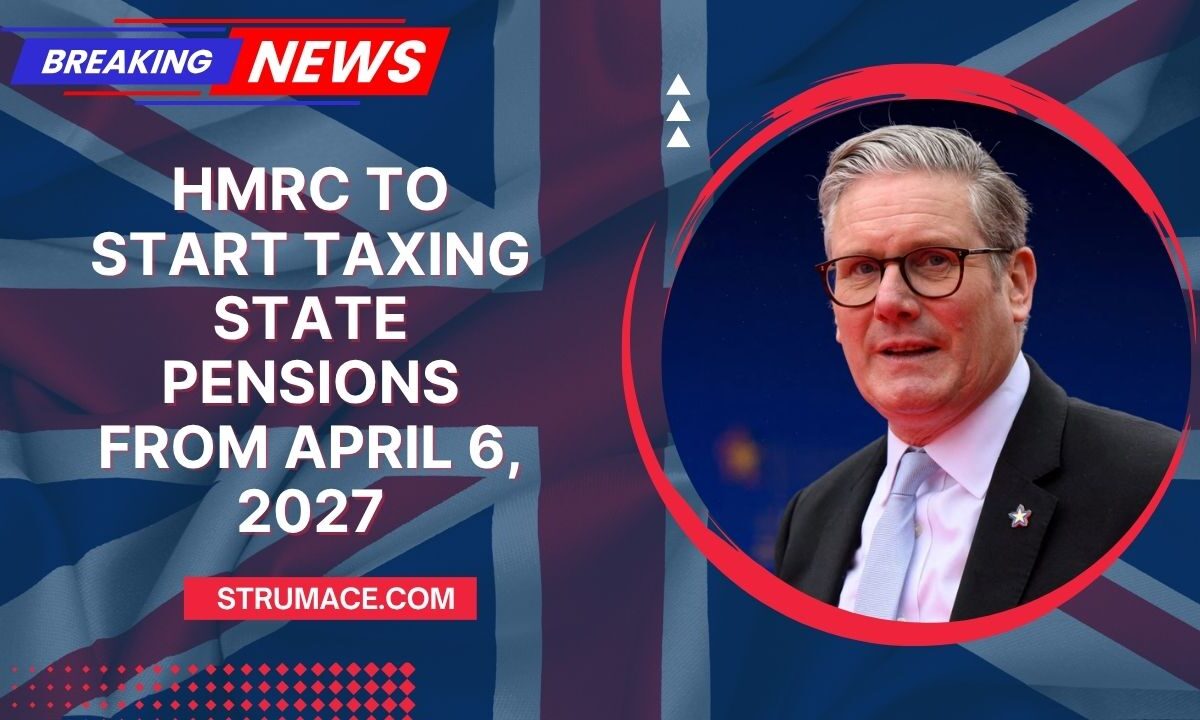Starting April 6, 2027, state pensioners in the UK will face income tax on their pension payments.
This comes as a result of the Triple Lock policy gradually increasing state pension amounts beyond the tax-free personal allowance, which has been frozen at £12,570 for several years.
The new tax implications will impact millions of retirees—many of whom may never have expected to deal with HMRC during retirement.
Why the Triple Lock Is Triggering Taxation
The Triple Lock ensures that the state pension increases annually by the highest of:
- Wage growth (May–July data)
- Inflation (September figures)
- A guaranteed minimum of 2.5%
Due to this mechanism, the state pension has steadily risen each year. From April 2025, pensions increased by 4.1%, bringing the full new state pension to £11,973 annually.
Based on expected 2.5% annual increases, the forecast looks like this:
| Tax Year | Annual Pension Payment | Personal Allowance | Taxable or Not? |
|---|---|---|---|
| 2025–2026 | £11,973 | £12,570 | No |
| 2026–2027 | £12,272 | £12,570 | No |
| 2027–2028 | £12,578.80 | £12,570 | Yes |
From April 6, 2027, pensioners receiving the full new state pension will exceed the personal allowance, meaning they’ll officially owe income tax on their pension.
What This Means for Retirees
This marks a historic shift—many retirees who rely solely on their state pension have never needed to file taxes.
But that will change starting in the 2027–2028 tax year, when HMRC will require tax returns or apply deductions via Pay As You Earn (PAYE) systems.
Key Implications:
- More admin: Pensioners may need to interact with HMRC, file returns, or track income more carefully.
- No tax refunds: Since income is taxed from the source, pensioners may see smaller monthly payments.
- Complexity with other income: Those also receiving private pensions or savings income may be pushed into higher brackets.
Can You Avoid the Tax?
While you can’t avoid the Triple Lock-driven increase, there are a few strategies to minimize your tax burden:
- Use your ISA funds: Withdraw from ISAs instead of taxable pensions.
- Take lump-sum withdrawals: 25% of private pension pots can be withdrawn tax-free.
- Delay claiming: If you don’t need your state pension immediately, deferring can offer long-term benefits.
- Split income: If you’re married and one partner earns less, income-splitting strategies may help reduce tax exposure.
Why This Change Matters
The freeze in personal tax thresholds—despite rising pensions—creates a situation where even low-income pensioners may owe tax.
Former ministers have called this “nonsensical,” especially for retirees whose only income is from the state pension.
It also challenges the idea that retirement equals a tax-free life. Many may be unaware of their new tax obligations, leading to surprise tax bills or penalties.
The Triple Lock, once a safeguard against inflation, is now nudging pensioners into the tax bracket. As of April 6, 2027, many state pensioners will find themselves liable for income tax, even if their only source of income is their pension.
This shift highlights the importance of financial planning in retirement. While the increased pension is welcome, understanding how it affects your tax situation is essential.
Take action now to prepare—review your income sources, explore tax-efficient strategies, and consider speaking with a financial advisor if needed.
FAQs
Will all pensioners be taxed starting April 6, 2027?
Only those receiving the full new state pension (£12,578.80) or with additional income will cross the £12,570 tax-free limit.
What happens if I exceed the personal allowance slightly?
You’ll pay basic rate tax (20%) on the amount above £12,570. For example, if you earn £8 over the limit, you’ll owe £1.60.
Can the personal allowance increase before 2027?
It’s currently frozen until 2028, but changes may happen depending on government policy or future budgets.




